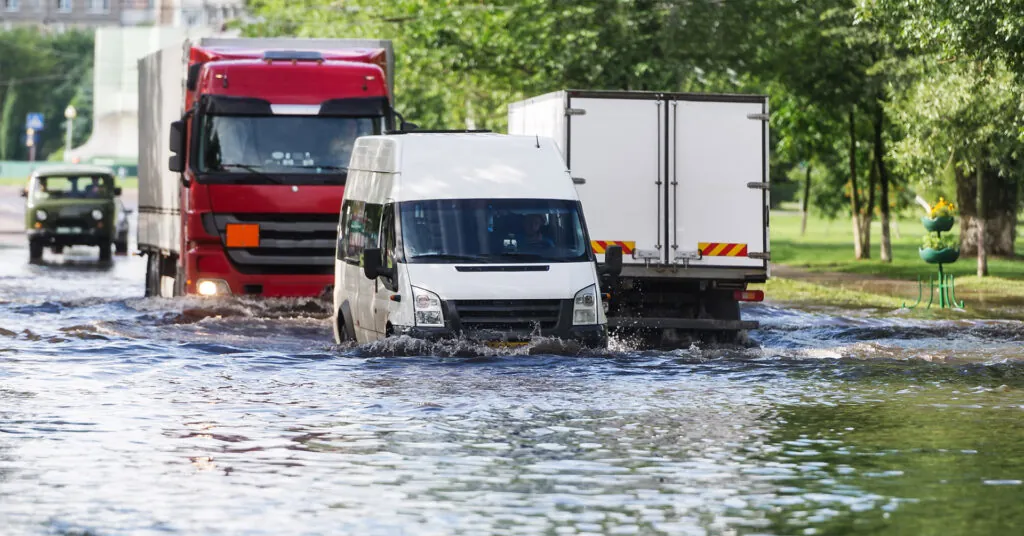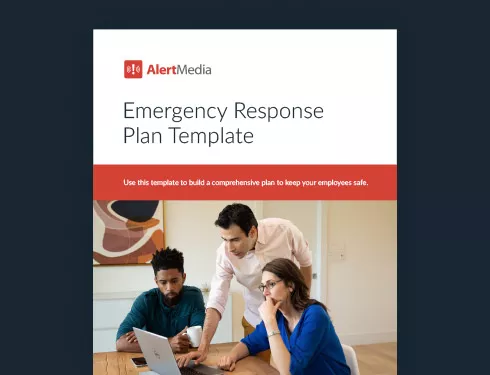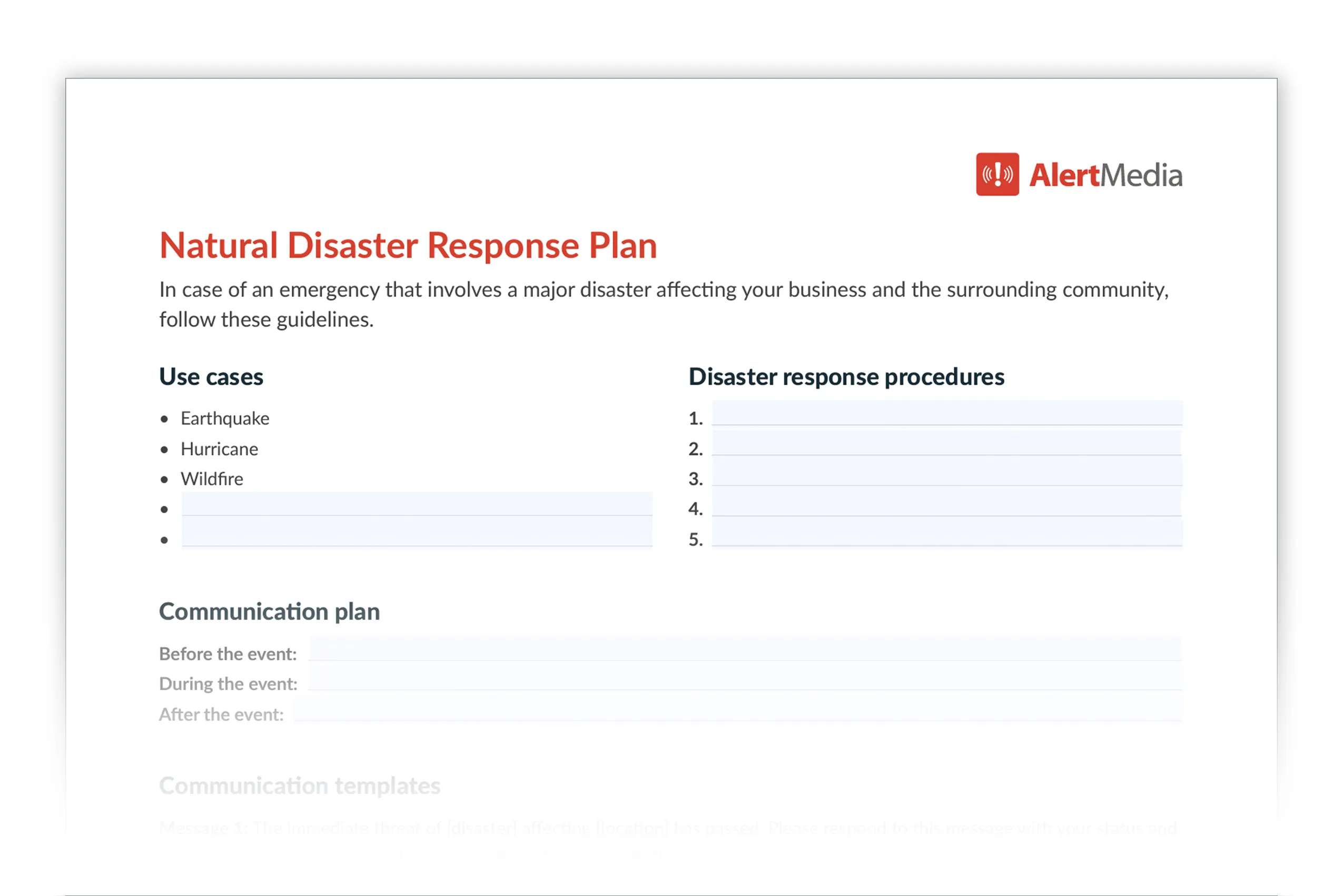
How to Build a Flood Emergency Response Plan for Your Business
Don’t wait until you’re knee-deep to prepare for a flood. Learn how to build a flood emergency response plan to protect your people and safeguard your assets, so your business can keep serving your community through a disaster.

In the last 20 years, flooding events accounted for nearly $97 billion in costs and more than 300 deaths in the United States. And these numbers don’t include the increasing rates and severity of damage and casualties caused by inland flooding events caused by hurricanes and tropical storms.
Flooding brought on by atmospheric rivers in California was the first billion-dollar weather event in 2023. Businesses like CliftonLarsonAllen (CLA), an advisory firm with several offices within the flood zone, needed to find an effective way to respond to the event to protect their at-risk employees.
Scott Van Pee, Quality and Risk Project Director at CliftonLarsonAllen, told us about his tactics for flood response in an interview on The Employee Safety Podcast. It takes a two-pronged approach: There is the effort of those in the impacted area and then support from those offsite. “So, we coordinate from both fronts: We have our contacts locally who can turn around and send communications, and then we make sure we have people on standby to help track people if needed.”
Having a comprehensive flood emergency response plan like the one Scott describes is the best way to ensure your business won’t flounder when the waters start to rise. Read on for a breakdown of what you’ll need to create your own flood response plan and how you can prepare your employees to stay safe and your operations to stay afloat during a flood emergency.
Why use a template to create your flood emergency response plan?
A fill-in-the-blank template guides you through the necessary details of a flood response plan, making the process quicker and simpler. By documenting everything in one place, you can avoid chasing down procedures, contact info, maps, and more—ensuring your response is as prompt, efficient, and effective as possible.
You can download this free template to get your planning on track.
 Preview of the Emergency Response Plan Template
Preview of the Emergency Response Plan TemplateEmergency Response Plan Template
Understanding the Risks of Flooding
The best emergency preparedness plans are based on a thorough risk assessment, and your flood preparedness plan is no exception. Luckily, unlike other, more unpredictable emergencies like earthquakes, there are lots of resources available to help you assess and understand your flood risks and how to prevent the most damage.
Examining recent or high-impact flood events in your area is one way to gain specific insight into your business’s risks and the impact a flood can have. You can also look to the Federal Emergency Management Agency (FEMA) website to find flood maps for your location that show exactly where floodwaters go and how high the flood levels get.
Conducting a thorough business threat assessment specific to your location is also vital. This assessment should identify vulnerable areas within the premises, critical infrastructure that may be affected, and valuable assets that need protection. It’s also a great opportunity to map out your flood evacuation routes and find high-ground areas for shelter in highly vulnerable spaces. By understanding the unique risks associated with your business location, you can develop targeted strategies to mitigate the impact of floods.
4 types of floods
While all floods are basically an overflow of water, not all floods share the same causes. Here are some of the different kinds of floods your business might face, depending on your location, facility, and the season.
River floods: Occur when rivers or streams exceed their capacity and overflow their banks. They are often caused by prolonged and heavy rainfall over large watersheds or floodplains.
Flash floods: Occur within a short period, typically a few hours or even minutes. They happen when intense rainfall or snowmelt overwhelms the capacity of the soil to absorb water, leading to rapid runoff. They often occur in areas already damaged by wildfires, as well as narrow canyons and areas without good drainage like city streets or neighborhoods.
Storm surges: Occur when coastal water levels rise higher than the normal tide. Storm surge is usually the result of tropical storms, hurricanes, or strong coastal winds and low atmospheric pressure.
Dam or levee failure floods: Occur when dams or levees, which are built to control water flow fail or are breached. The failure can happen for various reasons, such as structural defects, excessive inflow, or overtopping caused by heavy rainfall or snowmelt.
Establish a Crisis Management Team
To effectively respond to a flood emergency, assembling a competent crisis management team is crucial. This team should consist of individuals who clearly understand their roles and responsibilities and who can be relied upon during a crisis. Here are a few crisis management team roles to consider creating:
- Incident Commander—Responsible for overseeing the overall response effort and disaster recovery
- Communications Officer—In charge of internal and external communications about the event, including sending out any flood watch or flood warning alerts to employees
- Logistics Coordinator—Manages resources such as sandbags and generators (in case of outages) and ensures their proper allocation and deployment during the flood and throughout clean-up
Regular training, drills, and simulations such as tabletop exercises are essential for the crisis management team. These activities help team members familiarize themselves with their roles, strengthen coordination, and identify areas for improvement. By conducting these exercises on a regular basis, such as quarterly or bi-annually, you can ensure that the team remains prepared to handle a flood no matter when it occurs.
Develop Communication Protocols for Floods
Effective communication is paramount during a flood. When establishing your communication protocols within your flood response plan, there are a few considerations you’ll want to keep in mind.
First, you’ll need clear communication channels that allow you to quickly and easily reach those at risk and connect with your internal stakeholders. This includes leaders, employees, and customers, as well as vendors, contractors, and anyone else potentially in the flooded areas.
You’ll want to maintain up-to-date contact information for employees, emergency services, suppliers, local authorities, and customers so you can be sure your messages reach those at risk. Swift and accurate dissemination of any flood information can help keep personnel safe and enable timely decision-making.
To make your flood communication simpler in the moment of crisis, create pre-built flood communication templates for various channels, such as text, phone call, email, and push app notification. These templates should make it easy for the communications lead and anyone else with access to send out emergency alerts without writing something from scratch. This will help minimize confusion and ensure a coordinated response without delay.
Plan for Emergency Evacuation
Having well-defined emergency evacuation procedures is crucial to protect employees during floods. Establish clear evacuation routes, designated assembly points, and high-ground locations for sheltering-in-place if need be. The evacuation plan should consider accessibility and cater to the special requirements of employees with disabilities as well.
Regular emergency drills and training sessions should be conducted to familiarize employees with the evacuation procedures. By practicing these procedures, employees can respond swiftly and calmly during a flood, reducing the risk of injuries and facilitating a more efficient evacuation.
Protect Assets and Infrastructure
During a flood, physical assets, equipment, and critical infrastructure are vulnerable to damage. But there are mitigating actions you can take ahead of time to safeguard these valuable resources. This can include relocating assets to higher ground or upper floors, installing flood barriers or flood-resistant building designs, and ensuring proper drainage systems.
Regular maintenance and inspections play a crucial role in minimizing vulnerabilities. By identifying potential weaknesses in infrastructure such as exposed power lines or electronic assets, you can take proactive steps to reinforce them and reduce the risk of damage. It’s also helpful to ensure you have the proper insurance policies that will cover a flood or other natural disaster that might coincide, such as landslides.
Ensure Business Continuity
Maintaining business operations during and after a flood emergency is vital for long-term viability. But for many businesses, an interruption like a flood does more than prevent employees from going about their day-to-day operations. It also affects how a business is able to support its community.
Consider strategies such as data backup and disaster recovery plans to protect critical information. You can also implement remote work capabilities so employees can continue working from alternative locations if flood hazards prevent them from traveling to and from the work site. Additionally, identifying alternative suppliers and establishing relationships in advance can help mitigate supply chain disruptions if a key partner gets shut down due to a flood.
Review and Test the Plan
A flood emergency response plan should be regularly reviewed and updated to account for changes in business operations, infrastructure, or external factors. After flooding events or after drills and exercises, conduct after-action reviews to identify any gaps or areas for improvement. These simulations provide valuable insights into the plan’s effectiveness and allow for adjustments to be made.
Additionally, as climate change continues to increase the scale and severity of natural disasters, regularly review changes to flood maps and stay on top of any National Weather Service predictions for your area. Just because you weren’t previously at risk for a particular type of flood one year doesn’t mean you’ll never have to prepare for it.
Planning for Effective Flood Preparedness
It can be a matter of minutes for the waters to rise and put your people and business at risk. You don’t want to wait until the flood is upon you to plan for how you will protect your employees. Get started building out your flood emergency response plan now, so you’ll be ready long before you need to find high ground. And you can learn more here about how AlertMedia can make your communication and threat tracking easier and more reliable, so you have the best information as soon as possible and a reliable way to alert your people to danger. Schedule a demo today.

![6 Steps to Creating an Effective Emergency Response Plan [+ Template]](https://www.alertmedia.com/wp-content/uploads/2023/10/Blog-Emergency-Response-Plan.webp)


